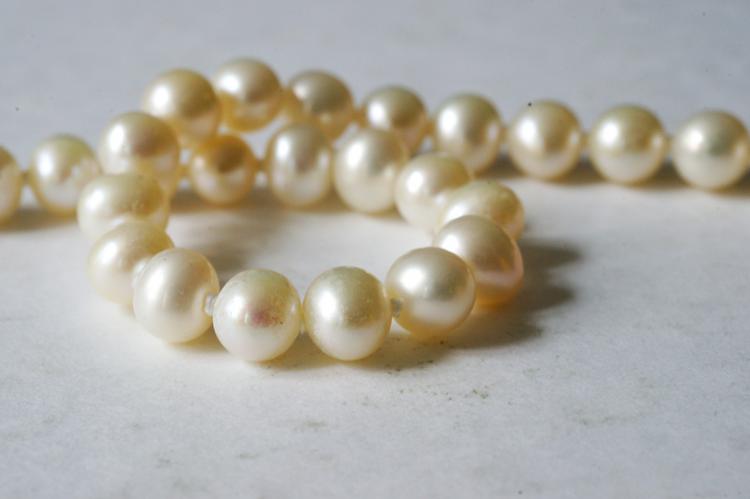How do oysters make pearls round?
Pearls typically rotate once every 20 days or so which creates the rotational symmetry: any differences in growth rate along the axis or rotation get copied around the entire circumference.
Pearl rotation is a self-organized phenomenon caused and sustained by physical forces from the growth fronts, Spanish and French researchers find out.
Formation
Pearls are formed of nacre, more commonly known as mother-of-pearlMother of pearl
Nacre is an astonishing material. It is a composite which consists mostly (about 95%) of the mineral aragonite, a form of calcium carbonate (the fabric of chalk and marble) , together with 5% organic material: proteins, peptides, lipids and polysaccharides.
The nacre is made of chemicals secreted by the same kind of cells responsible for making the mollusc’s shell. A crucial difference between shell and pearl nacre arises from the different geometries of the shell and the pearl: the pearl is immersed within its pearl sac and as such, unlike the shell, is free to move within it.
Several layers grow at the same time, creating terraces that can be seen on a pearl’s surface when inspected under a microscope. These terraces hold the key to the pearl’s rotation.
As new calcium and carbonate ions, or chitin or protein molecules, stick to the step of a terrace and become part of the growing crystal, they release energy which warms up the surface. Water molecules in the surrounding fluid bounce off the step edge and imparts a small force in the opposite direction.
Because of the terraces make up a ratchet shape, the small kicks imparted by warmed water molecules act in the same direction, causing the growing pearl to rotate.


